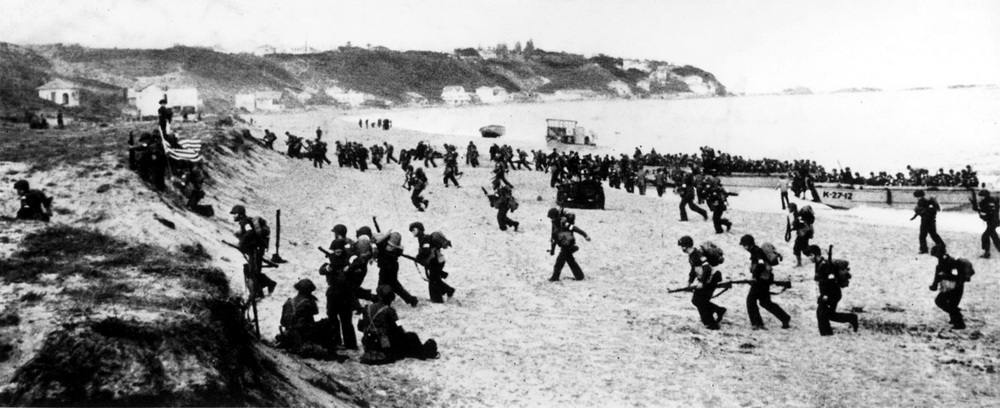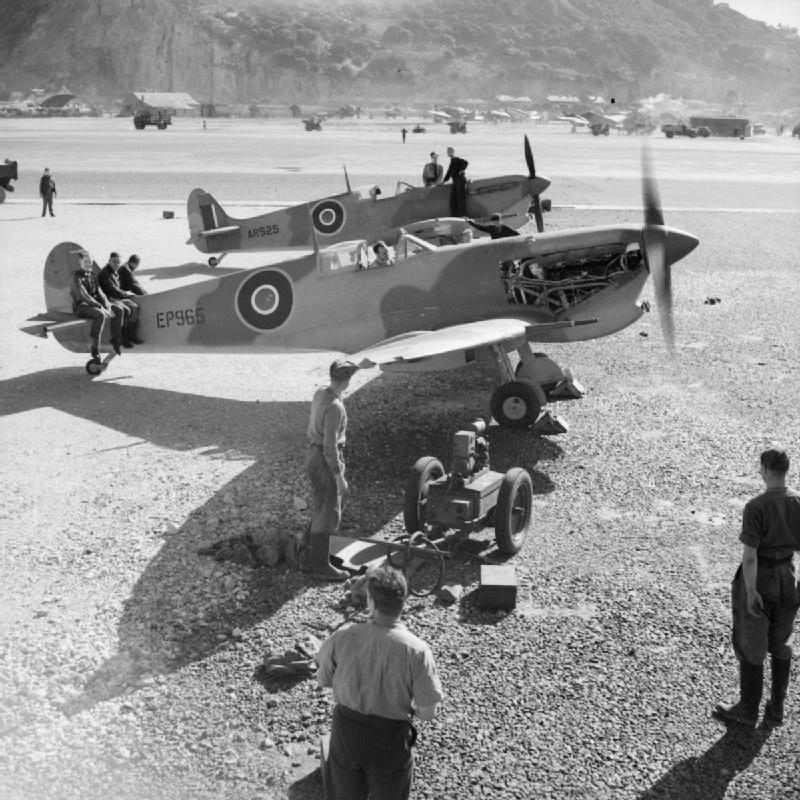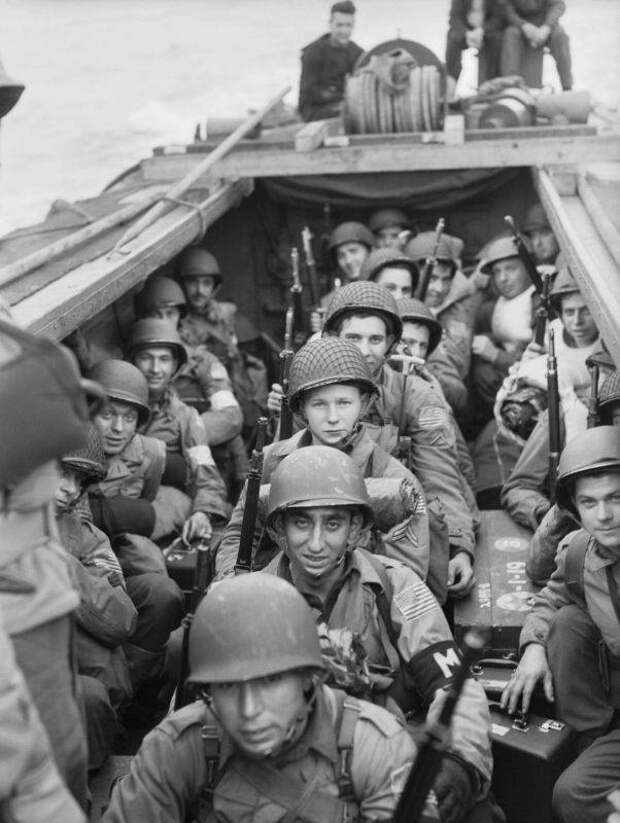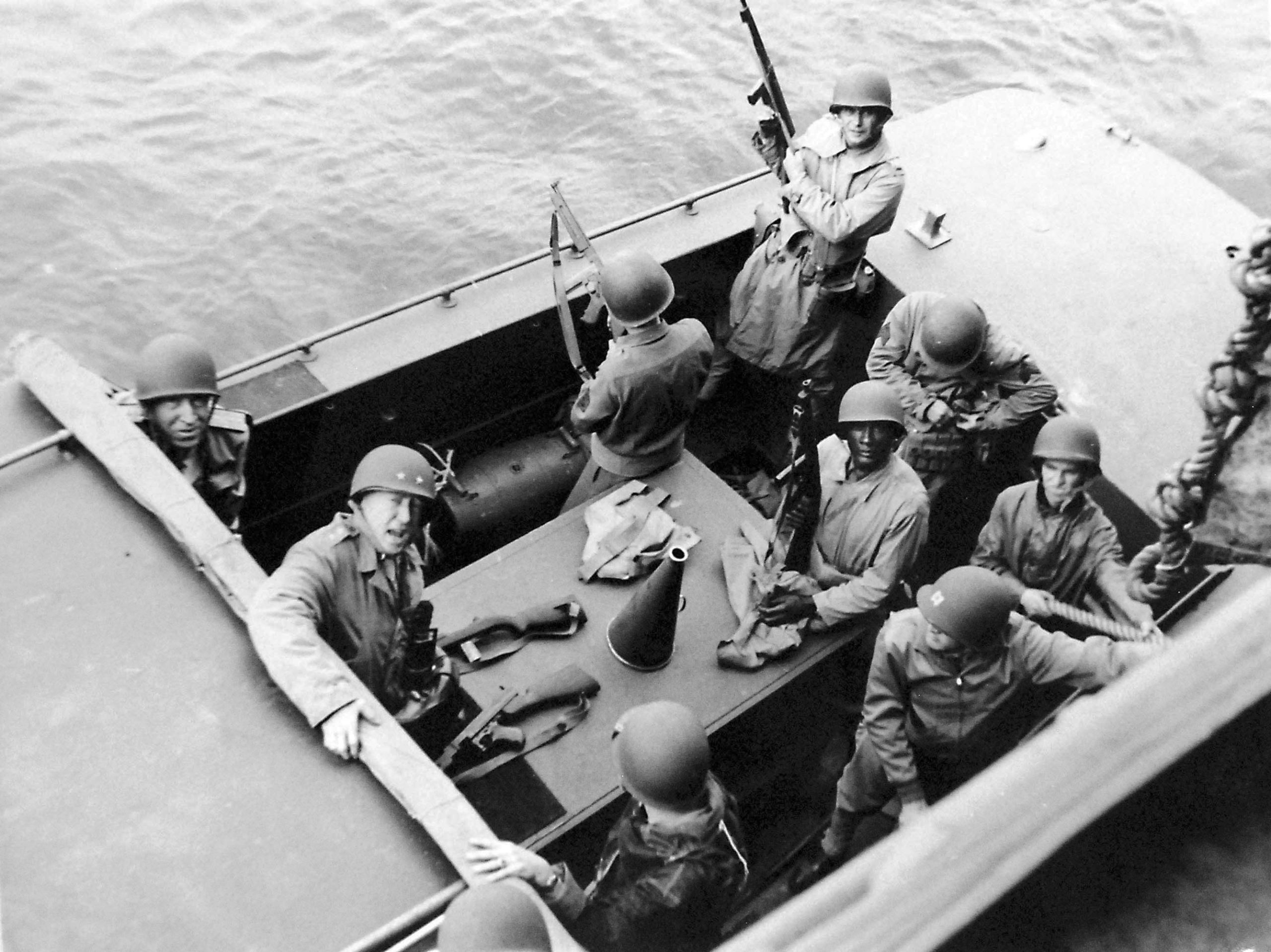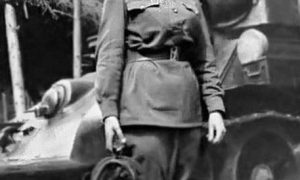Operation Torch was an Allied landing in French North Africa, Morocco and Algeria. Started November 8, 1942. Part of the North African Campaign during World War II.
The French colonies in the area were dominated by the Vichy regime, formally linked to Germany, but intelligence indicated that, under the right conditions, the French might defect to the Allied side. According to the plan of Dwight Eisenhower, Supreme Commander of the Allied Forces in the European Theater of Operations, the landing was to take place in three directions: Casablanca (western part), Oran (center) and Algiers (eastern part), after which a rapid offensive was planned in the southeast direction to Tunisia, towards the 8th British Army advancing on Tunisia from the east.
Previous events
The Allies’ plans for the anti-Hitler coalition included an invasion of northwestern Africa – Algeria and Morocco, that is, the territory of Vichy France, which had approximately 60,000 soldiers stationed in Morocco, batteries of coastal artillery, a small number of tanks and aircraft, as well as order 10 surface ships and 11 submarines. The Allies believed, including from information received from the American consul in Algiers, that the forces of Vichy France would avoid engaging in battle with the Anglo-American invasion forces (which was not confirmed). However, there was a danger that the Vichy Navy might try to avenge the British attack on Mers el Kebir in 1940.which made it extremely important to study the mood of the French forces in North Africa. Plans were made to secure their assistance.
The Allies intended to make a swift breakthrough into Tunisia to the south, followed by an attack by German forces from the rear. General Dwight Eisenhower was placed in command of the operation, with his headquarters in Gibraltar. Andrew Cunningham was appointed naval commander of the Allied Expeditionary Force; his second-in-command, Vice Admiral Bertram Ramsey, was tasked with planning the landing.
The American consul in Algiers succeeded in establishing tentative contacts with French officers, including the commander-in-chief of the Vichy forces in Algiers, General Charles Emmanuel Mast. They agreed to cooperate with the Allies on the condition that they negotiate secretly with one of the senior Allied generals in Algiers. Negotiations were successfully held on October 21, 1942 (on the Allied side, they were led by Major General Mark Clark).
The Allies also succeeded in winning over the general of the Vichy forces, Henri Giraud, by offering him the position of commander-in-chief of the French armed forces in North Africa after the invasion. Giraud, however, agreed only to the position of commander-in-chief of all the invasion forces, that is, to the place of Eisenhower. Having been refused, Giraud decided to remain “in the role of a spectator”.
The role of the USSR
The Soviet Union demanded that the United States and Great Britain begin military operations in Europe and open the so-called. “second front” to reduce the burden on the armed forces of the USSR on the eastern front of hostilities. In this regard, the American military leaders planned to carry out Operation Sledgehammer, which included a landing in occupied Europe, as soon as possible. However, their British counterparts believed that such a scenario of action would lead to disastrous consequences. Instead, a landing in French North Africa was proposed, with the liberation of North Africa being cited as a possible outcome.from Axis forces, improving control of the Mediterranean and preparing for the invasion of Southern Europe in 1943. Despite US President Franklin Roosevelt’s suspicion that an operation in North Africa precluded a European landing in 1943, the US supported the British plan.
Operation
The Allies planned to carry out the simultaneous capture of all key ports and airfields of Morocco and Algeria, attacking Casablanca, Oran and Algiers. The operation was to be carried out under the flag of the United States, not Great Britain (including for political reasons).
The Western Task Force (aimed at Casablanca) consisted of American units – the 2nd Armored, as well as the 3rd and 9th Infantry Divisions (35,000 in total). She was commanded by Major General George Patton, with Rear Admiral Henry Hewitt in charge of the naval part of the operation.
The Central Task Force, whose strike was aimed at Oran, consisted of the 509th Parachute Battalion, 1st Infantry and 1st Armored Divisions (18,500 in total). They were sent from Britain and were under the command of Major General Lloyd Fredendall. The naval part of the operation was led by Commodore Thomas Troubridge.
The Eastern Task Force (target – the city of Algiers) was under the command of Lieutenant General Kenneth Anderson and consisted of the 78th British and 34th American infantry divisions (20,000 people). The naval forces were led by Vice Admiral Harold Barrow.
The air part of the operation was divided into two directions – east and south of Cape Tenez in Algiers, respectively. The first was operated by British aviation under the command of Marshal William Welch, the second by the American under the command of Major General James Doolittle.
Casablanca
The Western Operations Group landed before dawn on 8 November 1942 at three locations: Safi, Morocco (Operation Blackstone), Fedale, Morocco (Operation Brushwood) and Mehdia, Morocco (Operation Goalpost). No artillery preparation was carried out, since it was assumed that the French would not resist.
The previous night there had been an attempted coup by the French General Bethoir. He surrounded the villa of the pro-Vischist General Auguste Nog, but Nog managed to escape capture. Betuar’s actions led Nog to the idea of the impending Allied landing, in connection with which he put the coastal defense forces on alert.
The most successful was the invasion of Safi. No artillery preparation was carried out here either, however, as soon as the intruders came under fire from the Vichy coastal artillery, return fire was opened from the ships. Safi was taken by noon on 8 November. By November 10, the last pockets of resistance in the city were crushed, after which the bulk of the forces under the command of General Harmon headed for Casablanca.
Casablanca was surrounded by November 10 and surrendered to the Allies an hour before the planned final assault. Patton’s troops entered the city unopposed.
In general, the resistance of the Vichy troops in Morocco was irregular. An attempt by a squadron of the Vichy Navy, which included the unfinished battleship Jean Bar, to prevent the landing was unsuccessful. As a result, many ships were lost, while the rest joined the Allies.
Oran
The Central Task Force’s strike was divided into three stretches of coast to the west and north of Oran. Due to insufficiently thorough reconnaissance of the coast, some attacking ships were damaged due to the unexpectedly shallow depth of the sea. This served as a valuable lesson in the planning of Operation Overlord (the Normandy landings).
Coastal artillery worked both on 8 and 9 November. The Vichy troops defended themselves very stubbornly, but were forced to surrender under incessant shelling from British battleships on November 9th.
Algeria
In accordance with agreements with the Allies, a group of 400 members of the French Resistance under the command of Henri d’Astir and José Abulquer carried out a military coup in the city of Algiers before the landing on the night of November 8th. They occupied key targets in the city, including the telephone exchange, the radio station, the governor’s house, and the headquarters of the 19th Corps. The Gaullist uprising was crushed, but it provided valuable assistance to the Allies in many ways: during the day, the Vichy defenders spent a lot of time regaining control of the positions lost during the coup, which allowed the Anglo-Americans to surround the city with almost no resistance.
The invasion was distributed among three sections of the coast. Not all the landing troops got into the areas allotted to them, which, however, was insignificant, since they met with practically no resistance. The coastal artillery batteries were put out of action by the insurgents in advance. One of the French generals openly greeted the allies.
The only clashes took place in Algiers itself, which was surrendered to the allies at 18:00.
Effects
Political implications
It soon became clear that Henri Giraud did not have sufficient authority to command the French forces; all the more, he decided to wait for the results of the landing, while in Gibraltar. Therefore, Eisenhower, with the support of Roosevelt and Churchill, offered the Algerian-based Admiral François Darlan control of North Africa if he defected to the Allies, effectively leaving the Vichy regime intact. An angry reaction followed from both Charles de Gaulle, the French Resistance, and war correspondents. Despite this, this idea was carried out. After the assassination of Darlan by a local anti-fascist on December 24, 1942, Giraud was put in his place, who soon arrested the leaders of the November 8 uprising with the full connivance of the allies.
Upon learning of Darlan and Giraud’s cooperation with the Allies, Hitler ordered German troops to occupy the southern, unoccupied part of France, as well as to strengthen the German presence in North Africa. The French protectorate in Tunisia was also occupied.
Be that as it may, the use by the Allies of such figures as Darlan and Giraud made it possible to convert influential leaders of the Vichy regime to their side, bring them closer to the French National Committee in London and ultimately form a single French government recognized by the United States and Great Britain.
Military implications
Following the occupation of Vichy France by the Germans, as well as their failed attempt to capture the French fleet at Toulon, French forces in French West Africa sided with the Allies. With the support of the French Tunisian army, the Allies invaded Tunisian territory and almost reached its capital, the city of Tunis, but were driven back by a German counterattack. A series of retreats followed under pressure from Erwin Rommel ‘s German Afrika Korps in early 1943. However, the Allies, having received the necessary reinforcements, managed to stop the Germans and on May 7, 1943, take the cities of Tunis and Bizerte. Cut off from the support of their naval and air forces operating from Sicily, the Axis troops in Tunisia, under the blows of British troops advancing from the east (from Egypt) and Anglo-American forces advancing from the west (from Algiers), capitulated on 13 May 1943.


